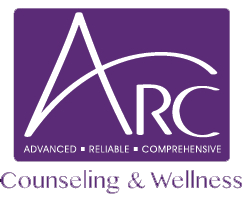Demystifying Meditation & Mindfulness: 5 Things Everyone Should Know Before Beginning A Practice

Within ten seconds, my mind was jumping to my to-do-list and within another two, it had unraveled into a ball of obsessive thoughts about work and getting there on time (it was the weekend mind you), an email that had to be returned to an anxious parent, and how I was going to teach the new unit on rocks and minerals, if the rocks and minerals never showed up in my classroom the day before?
Saturday morning and I was only fourteen hours into the weekend. I desperately wanted to turn my brain off and just enjoy my forty-eight hours away from my teaching job and the rest of life. Having tried pretty much everything to end the cycle of stress, I considered this a last resort.
With every thought, my chest tightened, my heart began to race and my body decided it wasn’t gonna get comfortable— it would rather revolt by making me itch all over and send dull pains through my lower back.
In desperation, I silently yelled at my thoughts to “Stop!” just like in that Seinfeld episode where Elaine is late for a crosstown wedding, and the subway car halts and goes into darkness while her stress and frustration explodes into angry thoughts inside her brain. That was me.
At less than a minute, I had given up in a fit of disbelief. How could meditating be so hard if it was supposed to make you feel so good and be easy? I continued on this way for the next six months until I finally settled into meditation through a regular yoga practice, something that was totally unexpected, but very welcomed.
Five years later, my meditation practice is independent of yoga and looks completely different than the one-minute disaster that ensued on my yoga mat. I also have a much better understanding of a few things related to Meditation and Mindfulness, which by the way, took a lot of revisiting and tweaking. And while the practice has supported a lot of change in the way I relate to stress, it has also actually changed how I relate to the world around me, and more importantly, how I relate to myself.
Why demystify meditation and mindfulness? Because it’s an essential and simple tool for every person seeking personal growth and contentment in their life, and knowing how to use it effectively has value beyond measure. Meditation is a complementary and empowering practice, meaning it supports traditional therapies and lifestyle, and helps the meditator feel more in control of their own life. This ultimately supports our ability to make the best choices for our being during times of peace, but especially during times of stress.
Below are five aspects of meditation that I wish I would have known before starting. While it’s not an exclusive list, understanding these components can make the launch into meditation and mindfulness a lot more effortless.
1. Step into a Beginner’s Mindset.
Approach meditation and mindfulness with zero preconceptions. In Zen Buddhism this concept is called Shoshin, meaning “beginner’s mind”, and it refers to keeping an attitude of openness and eagerness. Anything can happen while in meditation: thoughts can and will invade your space, memories may filter in from long ago, sleepiness, agitation or utter joy can set in and the body can literally start talking to you through sensation. Zen Master Shunryu Suzuki said “In the beginner’s mind there are many possibilities. In the expert’s mind there are few.”
2. Meditation and Mindfulness Are Not The Same Thing.
Meditation is the practice of quieting and emptying the mind, while mindfulness is the awareness that arises from the practice of meditation in it’s many forms. We can be mindful without meditation, but meditation brings mindfulness to an entirely different level. When we practice meditation, we learn to ‘drop in’ to a higher plane of our own consciousness.
In fact, Beta waves (thinking) eventually make way for Alpha and Theta waves, and finally into delta, in which the brain allows us to access deep unconscious thoughts, intuition and insight.* We eventually learn to respond rather than react, we become able to identify what is right for us versus what is not, we notice what’s going on with our physical body in a way that may have eluded us previously, and much, much more.
3. “Body Not Stiff, Mind Stiff.”
Sri. Pattabhi Jois, the modern Yogi Guru used to respond with this to his students when they complained that their bodies couldn’t achieve a certain yoga posture. The same goes for meditation. We often blame our bodies for making it hard to sit for long periods of time, or in a certain position, or to sit at all in meditation, but meditation doesn’t have to look like a seated Buddha statue. Not only can it be done while sitting in a chair or walking, but it can also be done whenever you have the time—-like on the train, in your office, or even in the bathtub.
4. Human Beings Are Born With Brains.
This, by nature, means that we’re wired to think. That finely tuned computer that’s contained in our skull is meant to process information and process it all of the time. In terms of how this translates to learning to meditate, it means that the goal of meditation is not to have NO thoughts, rather, we recognize when a thought comes into the emptiness that we may have had for a few seconds, and we acknowledge it. Once we understand that we were thinking-again- we chose to move back into emptiness and let go of the fact that we got off track, without judgement, and over and over and over again.
As a side note, one of the many benefits is that as the brain learns to quiet down, with meditation it also learns to process information faster. This is called Gyrification, or cortical folding and relates to intelligence. ** Imagine if every child learned to meditate from an early age, how this might relate to successful learning outcomes.
5. Meditation is Like Learning An Instrument.
That means it takes practice and once you’ve learned you will be honing it every time you re-engage in it. We love fast and quick solutions to problems in our lives, because we are a busy lot. But meditation requires a commitment to bettering the way we relate to the world, to slowing down, to Be, more than Do.
Fortunately, with the practice comes reduced pain and increases in the immune system, reduced feelings of depression, anxiety, anger and confusion, increased blood flow and slowing of the heart rate, calm peace and balance and increased energy. Once these feelings begin to set in, our bodies crave the feeling again, hence leading us back to meditation.***
Want to learn more or begin your own meditation and mindfulness practice? Join our Fall 2017 Meditation & Mindfulness Workshop, or schedule an Individual or small group Meditation Session with Sherri. Please contact us for more information at 866-200-9090 or [email protected].

